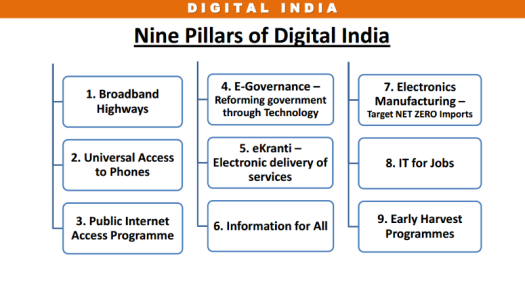Simple, innocent and very useful are the working electronics and electronics in our lives. Past their useful lives these are horrendous monsters. Discarded at home and work place these start disintegrating and become ready source of harmful and hazardous substances. Fatal to our health and extremely poisonous to our environment these need to be disposed from our lives and surroundings.
“Update: ZeroWaste is now InstaCash”
E Waste Toxic that affects health and environment when dumped
E-Wastes contain Lead, Mercury, Cadmium and flame retardants that cause multiple toxic Problems. If not properly handled these leach into our natural water reservoirs and rivers. Untreated water finds a way back into our farms, forests and foods. Some of these are very fatal and once released into the environment contaminate all our surroundings with far reaching harmful for generations to come
E — Waste & their Toxic Compounds
For easy reference, listed under are the commonly found E — Waste in our lives and the toxic elements / compounds or the product they effuse at the end of their life cycle:
E — Waste Form
Element / Compound
(in alphabetical order)
Harmful Effects
Medical equipment, Fire detectors, active sensing element in smoke detectors
Americium
Once in the body, americium-241 tends to concentrate in the bone, liver, and muscle. It can stay in the body for decades and continue to expose the surrounding tissues to radiation, and increase your risk of developing cancer. Released in the environment contaminates air, soil and waters.
LED (Light Emitting Diodes)
Arsenic (Gallium Arsenide)
Extreme exposure to Arsenic can lead to Skin diseases, reduced nerve conduction and Lung Cancer.CRT, Spark Plugs, Fluorescent Lamps
Barium
Can lead to Brain Swelling, Muscle atrophy, Damage to heart, liver & spleen,Power Supply Boxes & X Ray Lenses
Beryllium
Inhalation of beryllium dust, fumes or mist can cause, Lung Cancer & Berillycosis.Skin exposed to beryllium can lead to poor wound healing and wart-like bumps.Fire retardants for Plastics, Printed Circuit Boards and CasingsBrominated Fire Retardants — Tetrabromo-Bisphenol-A, Polybrominated Biphenyls, Polybrominated Diphenyl EthersBurning these materials release dioxins & other toxins which lead to Severe Hormonal DisorderRechargeable NiCd-batteries, Fluorescent layer (CRT screens), Printer inks and toners, Photocopying-machines (printer drums)
Cadmium
Cadmium is taken into our bodies through Respiration & Food. It has strong tendency to accumulate in our bodies and environment. It leads to severe damage of Kidneys & Lungs. Causes flu like symptoms, weakness, fever, headaches, muscular pain, Pulmonary Emphysema & Bone Disease.Cooling Units, Insulation Foams
CFCs (Chlorofluorocarbons)
When released into the atmosphere, they accumulate in the stratosphere and have a deleterious effect on the ozone layer. This results in increased incidence of Skin Cancer in Humans and in Genetic Damage in many organisms.Data Tapes, Floppy Disks
Chromium
Cellular changes & DNA damage. Harmful to eyes, skin & mucous membraneLead-acid batteries, Electronic Components, Cable Sheathing, CRT Glass & Solders
Lead
Appetite loss, Abdominal pain, Constipation, Fatigue, Sleeplessness, Irritability and headache. Kidney Damage, Vomiting, Diarrhea, Convulsions, Coma or even Death. Amongst young children it can damage nervous connections and cause blood and brain disorders.Batteries, some switches and thermostats, and fluorescent lamps
Mercury
Bio-accumulates causing brain and liver damage if ingested or inhaledDielectric fluids for capacitors and transformers, Heat transfer fluids and as additives in adhesives and plastics.
Poly Chlorinated Bi Phenyls
Serious non-cancer health effects in animals, including effects on the immune system, reproductive system, nervous system, endocrine system and other health effects. PCBs are persistent contaminants in the environment.Cable insulation
Poly Vinyl Chloride
When burnt produces large quantities of hydrogen chloride gas, which combines with water to form hydrochloric acid and is dangerous because when inhaled, leads to respiratory problems.Older photocopying-machines (photo drums)
Selenium
Selenosis causing hair loss, nail brittleness, and neurological abnormalities (such as numbness and other odd sensations in the extremities).Interior of CRT screens, mixed with rare earth metals. Dry Cell Batteries
Zinc Sulphide
Exposure to large amounts of zinc can be harmful. It can cause stomach cramps, anemia, and changes in cholesterol levels.
ZeroWaste as an authorized E Waste Management Company collects the discarded electronic & electrical equipments through its Smart Exchange™ & Collection Stores. You may contact us to get your e waste picked and receive instant cash payment.
info@getinstacash.in | www.getinstacash.in
Note: This post was originally published in June 2015 and has been completely revamped and updated for accuracy and comprehensiveness.





